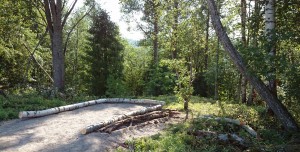 The eastern white cedar, Thuja occidentalis, is the most familiar of the world’s five tuja species. It was brought to Europe in a very early stage and has since been widely used in our gardens, in all its varieties, but mainly in pillared form. Thuja roughly means fragrant plant or incense. Its range covers the eastern half of Canada where it is mainly a wetland species in the boreal coniferous forest.
The eastern white cedar, Thuja occidentalis, is the most familiar of the world’s five tuja species. It was brought to Europe in a very early stage and has since been widely used in our gardens, in all its varieties, but mainly in pillared form. Thuja roughly means fragrant plant or incense. Its range covers the eastern half of Canada where it is mainly a wetland species in the boreal coniferous forest.
The entire genus Thuja is native to the northern hemisphere and Arboretum Norr have four of the five species in The Arboretum in Baggböle. The western redcedar (Thuja plicata) is one of the largest trees on earth, while the common thuja (T. occidentalis) has a modest height record of 34 m in southern Canada. The largest specimens of our 30-40 year old individuals, today have a height of more than 10 m. The tuja can be very old, probably up to 2000 years. There are also scattered tuja populations further south, far down in the eastern United States, and then it grows together with various deciduous trees that are abundant there.
